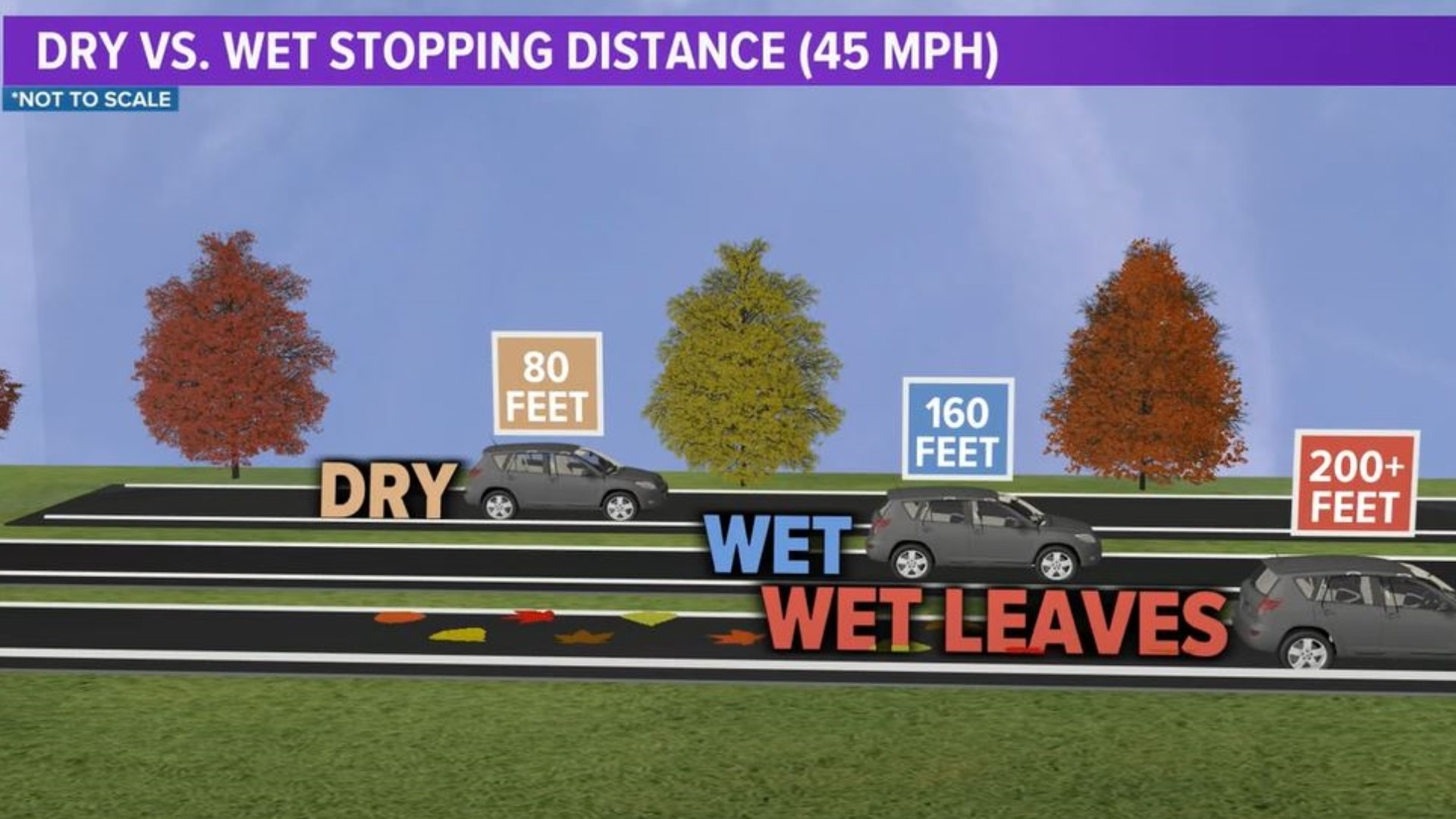MAINE, USA — Mainers are used to driving around in wet, windy storms this time of year. After all, nor'easter season has arrived.
The obvious impacts include dealing with wet roads and occasional downed branches.
One of the bigger things that is often overlooked, though, is the impact of wet leaves on road conditions and drainage.
The first nor'easter of the season sometimes comes after the trees are mostly bare. This year, the first nor'easter helped the trees lose their leaves.
Let's start with the first impact: driving conditions.
When you're driving down the road on a sunny day, it's all second nature. On a snowy day, you're exercising quite a bit of caution.
Did you know that wet leaves can be just as slick as ice?
Well, they can be! Here are the numbers...
If you're traveling 45 miles per hour, it will take 80 feet of dry road to stop (once you hit the brakes).
For wet road, it takes more like 160 feet.
Add in wet leaves, it can take 200 feet to 250 feet to stop. That's about triple the distance it takes on a dry day.
Maine has a ton of leaf-covered backroads with speed limits of 55 mph. Take it slow when you're traveling.
On top of that, all of the leaves in the road have to end up somewhere.
Usually, they dry out and get blown away. However, when there's heavy rain, they can get swept into storm drains and clog them up.
A clogged storm drain greatly increases the risk of flash flooding.
If you've got a storm drain near you, it's not a bad idea to check it every so often through the fall. Clear it out if it gets back up with leaves and other debris.
There's already more rain in the forecast before November starts back up. Take it slow on the roads, keep an eye out for standing water, and don't take any red balloons from sewer grates.
You can follow me on Twitter for more weather info - @MikeSliferWX.
RELATED: NEWS CENTER Maine Weather Forecast

